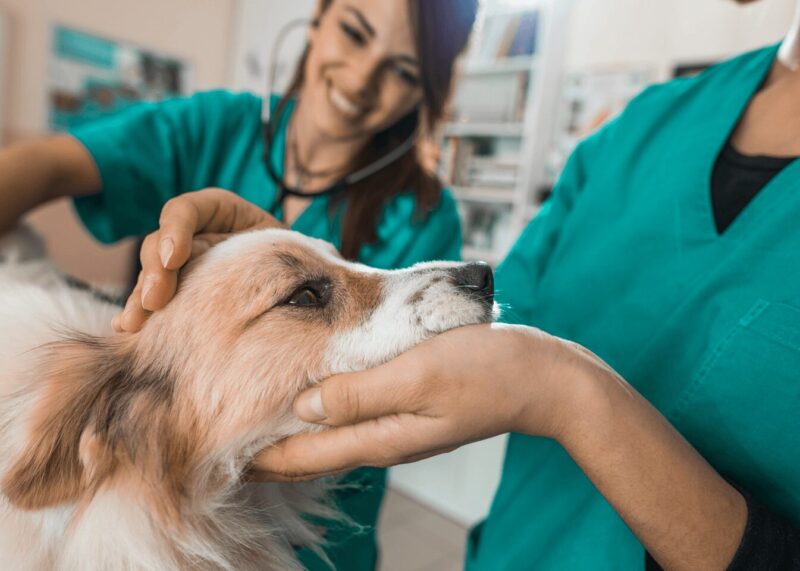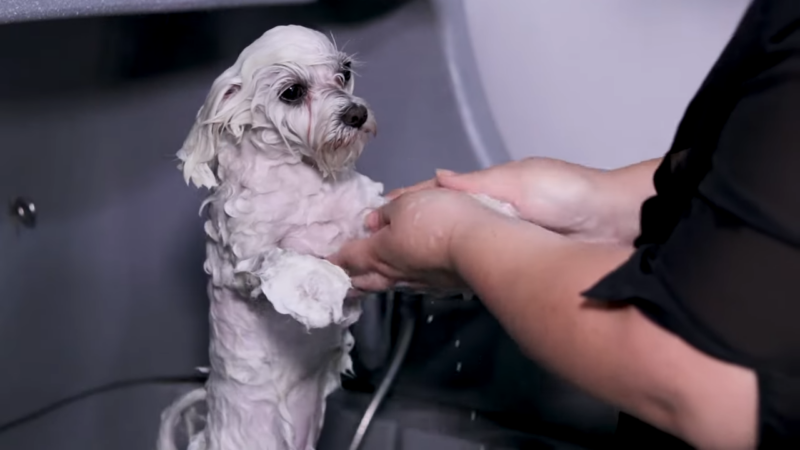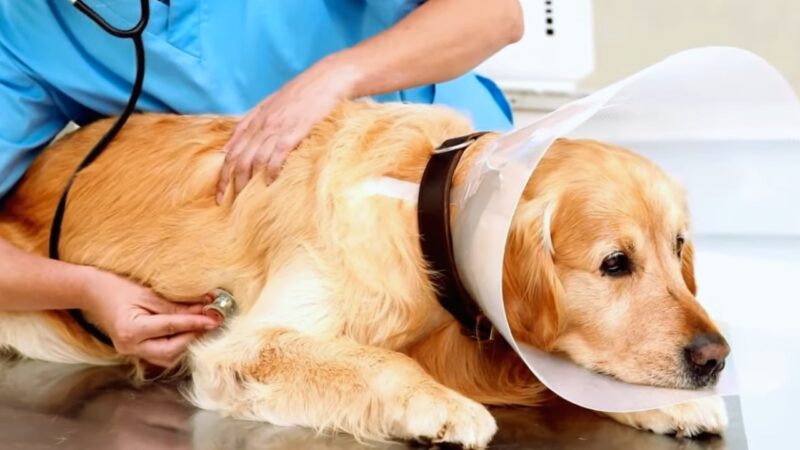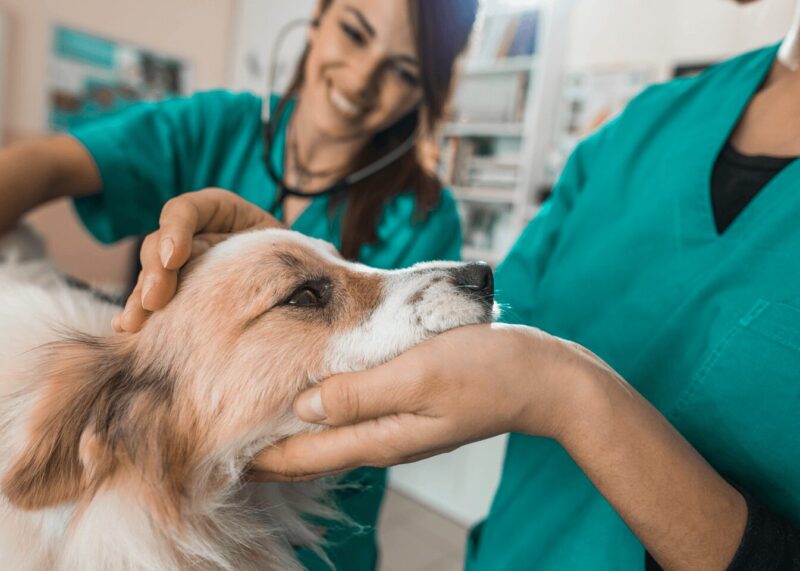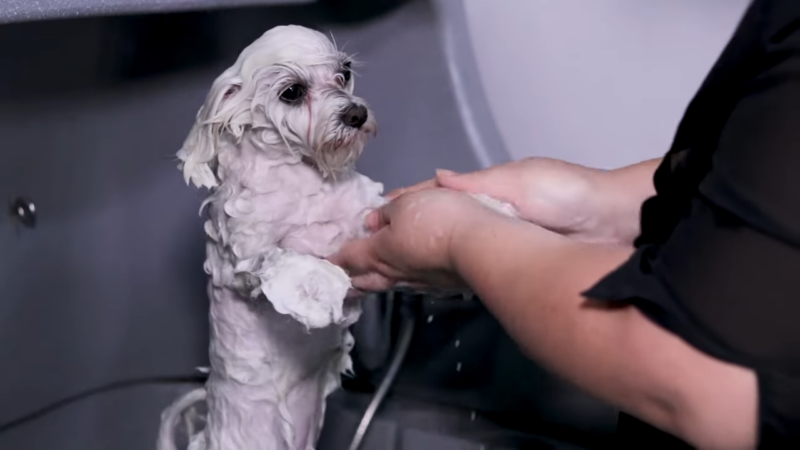
-
Srdjan Ilic
- Published:
- Updated: September 10, 2024
- Category: Dog Specific Care
Share Post:
Springer Rage Syndrome is a rare but controversial behavioral condition primarily associated with Springer Spaniels, especially the English Springer Spaniel breed.
This syndrome manifests as sudden, unpredictable bouts of aggression, often occurring without obvious provocation or warning signs.
It has been a topic of debate in veterinary behavior circles, with questions about its causes, diagnosis, and even its existence.
9 Signs of an Impending Attack

Sudden Mood Swings
Your dog might be calm and content one moment, then suddenly seem agitated or on edge. These rapid shifts can be a sign something’s about to happen.
Intense Staring
A Springer suffering from rage syndrome may start to fixate on something or someone, staring intensely without blinking. This behavior can be unsettling and is often a precursor to an attack.
Unprovoked Aggression
Unlike typical aggressive behavior, dogs with Springer Rage Syndrome might lash out without any apparent reason or warning, making it difficult to predict.
Ears Pulled Back
The dog may pull its ears back against its head, signaling discomfort or stress. This physical cue often accompanies other signs of agitation.
Lack of Awareness After the Attack

After an aggressive outburst, dogs with rage syndrome may appear confused or disoriented, as if they don’t even realize what just happened.
Dilated Pupils
You might notice their pupils dilate significantly, giving their eyes an almost wild look. This can be a clear indication that an aggressive episode is on the horizon.
Unusual Stillness
Some dogs will suddenly become unusually still or frozen right before an attack. This eerie calmness can be a major red flag.
Growling or Snarling Without a Cause
Growling is a common way dogs express discomfort, but in the case of Springer Rage Syndrome, these vocalizations might occur without any external trigger.
Random Biting or Snapping
Dogs with this condition may bite or snap at people or other animals without warning. It can happen in the blink of an eye, even if everything seemed fine just moments before.
Key Characteristics of Rage Syndrome
Sudden Aggression
A dog affected by Springer Rage Syndrome exhibits sudden, intense aggressive behavior, often biting or attacking with little or no warning. The aggression is typically directed toward humans, including family members, but can also be targeted at other animals.
Unlike typical aggressive behavior, this condition is often unprovoked, and the dog may appear completely normal and relaxed before the aggressive outburst.
Lack of Warning Signals
In normal canine aggression, warning signals like growling, baring teeth, or body language changes usually precede an attack. However, in Springer Rage Syndrome, these signs are often absent, making the behavior more unpredictable and dangerous.
Post-Aggression Amnesia or Dazed State
After an aggressive episode, affected dogs may exhibit a dazed or confused state. They may seem unaware of what they just did, as if the aggressive outburst did not register in their conscious behavior.
Some owners report that the dog appears disoriented or shows signs of remorse, such as retreating or acting submissive, following an incident.
Genetic Component

There is speculation that Springer Rage Syndrome may have a genetic basis. The condition seems to occur more frequently in certain bloodlines, leading some experts to suggest that inherited brain abnormalities or chemical imbalances could contribute to the syndrome.
The English Springer Spaniel is most commonly associated with the syndrome, but it has also been reported in other spaniel breeds.
Triggering Factors
While the aggressive episodes seem unprovoked, some triggers may still exist. For example, the dog may be touched in a specific way or woken from sleep, which could set off an episode.
Stress, overstimulation, or frustration can exacerbate the condition.
Potential Link to Epilepsy
Some researchers have suggested a possible connection between Springer Rage Syndrome and forms of epilepsy or other neurological disorders. The idea is that aggressive outbursts could be caused by seizures affecting specific parts of the brain, especially the amygdala, which is responsible for controlling emotions like fear and aggression.
Age of Onset
Springer Rage Syndrome typically manifests in young adult dogs, with most cases being reported between 1 to 3 years of age. This is when the dog has reached social maturity and any underlying behavioral issues begin to become more apparent.
Potential Causes of Rage Syndrome in All Dogs
Factors
Description
Genetic Factors
Predisposition in certain breeds and potential hereditary patterns.
Neurological Factors
Abnormal brain structures and neurochemical imbalances affect mood and aggression.
Medical Conditions
Hormonal imbalances and other health issues potentially influence behavior.
Environmental Factors
Unknown environmental triggers; aggressive events occur without a clear cause.
Behavioral Indicators
Sudden, spontaneous aggression, glazed eyes, confusion, and escalation of behavior without warning.
Could Idiopathic Aggression Be a More Appropriate Term?
Idiopathic aggression, commonly recognized as rage syndrome, refers to instances of unprovoked and inexplicable aggression in dogs. The term “idiopathic” highlights that the causes are unknown, and despite the possibility of identifying certain triggers in individual cases, there is no definitive consensus on what incites this behavior.
Methods to Address Idiopathic Aggression

Initial Assessment
This requires a thorough medical examination. For example, if a brain tumor is diagnosed, the treatment plan will differ significantly from the approaches used for rage syndrome.
Collaboration with Experts
This multidisciplinary approach ensures that both medical and behavioral factors are considered, offering a well-rounded treatment strategy.
Holistic Treatment Plan
By integrating insights from veterinary care and professional training, owners can create a comprehensive plan that addresses all potential aspects influencing their dog’s behavior. This multifaceted approach is essential to effectively manage idiopathic aggression.
Methods for Managing Rage Syndrome

Medication is often a key component, particularly for dogs exhibiting extreme aggression. Such medications might include anti-depressants or drugs designed to reduce anxiety, helping to manage mood swings and aggressive behavior.
Behavior modification techniques are also crucial. Professional trainers and behaviorists work to implement structured routines aimed at reducing the frequency and severity of aggressive episodes. Techniques may involve positive reinforcement, establishing clear boundaries, and other methods that encourage desired behaviors while discouraging aggression.
Creating a stable and stress-free environment for the dog is another critical aspect. This may involve changes to the dog’s daily routine to ensure consistency and reduce anxiety.
Regular exercise, a balanced diet, and avoiding known triggers can contribute significantly to managing the condition. Steps like establishing a structured daily schedule and helping consistent, positive interactions create an environment conducive to reducing aggression.
Measures to Prevent Rage Syndrome
- Early Socialization: Introducing puppies to diverse people, animals, and environments early on encourages proper social behavior and reduces future aggression risks.
- Foundational Training: Employing positive reinforcement during basic training not only builds a strong owner-dog bond but also establishes a foundation for good behavior.
- Consistent Veterinary Care: Routine veterinary visits can catch and address health issues impacting behavior.
- Thorough Breed Research: Before selecting breeds prone to behavioral issues, investigate and consult experts about potential risks.
- Professional Assistance: If behavior concerns arise, seek guidance from a qualified veterinarian or certified behaviorist promptly.
Products That Can Help with Rage Syndrome

Foraging Kit for Reducing Boredom
The Pet Remedy Boredom Buster Foraging Kit engages a dog’s mind and body. It promotes natural foraging behaviors, which can help reduce boredom and associated aggressive behaviors. The kit offers a stimulating and enriching experience for dogs.
Protective Basket Muzzle
A Basket Muzzle offers immediate safety and helps build public trust. It allows dogs to pant and drink while providing socialization opportunities. Made of strong Thermo Plastic Rubber (TPR), it can be shaped to fit different dog nose shapes, enhancing comfort and effectiveness.
Secure Dog Barrier Gate
The Safety Dog Gate provides tailored security with its expandable barrier design. It is easy to install and operate, ensuring enhanced safety for both the dog and household members. This gate allows for easy monitoring of the dog’s activities.
Related Posts:
- 6 Clinical Signs of Hyperkeratosis in Dogs - Watch…
- Potcake Dog Rescues - 7 Signs a Potcake is Right for You
- Signs Your Pet Needs Immediate Veterinary Attention…
- Can Female Dogs Orgasm? Pleasure Unleashed!
- Can Cerenia Cause Death in Dogs? Life-Saver or…
- Preventing and Treating Blackheads in Dogs ─ Ultimate Guide


